The bass species is one of North America’s most prevalent types of game fish. They are spread throughout nearly every one of the American states and are also known to flourish in Canada and Mexico as well. While the largemouth and smallmouth bass are the most popular, some anglers are unaware that there are actually many different types of bass that are found throughout this part of the world.
Some of these bass species are more common than largemouth or smallmouth in the particular section of the country they are typically found in. There are actually 15 species of bass in total that are found throughout the world—mostly in North America.
This article is part of my Complete Guide to Bass Fishing series that you might be interested in.
Table of Contents
1. Largemouth Bass
Beginning with the most popular of the black bass species, the largemouth bass is easily one of the top freshwater fish in the world. The Largemouth bass is also known as Micropterus salmoides and is the largest of the black bass species as it is known to grow to more than 20 pounds in the right habitat conditions.
Largemouth bass are most prevalent throughout the eastern United States, as well as the midwest. These types of bass generally prefer to live in clear water instead of other bass species that might be found in muddy areas where creeks and rivers feed into larger bodies of water.
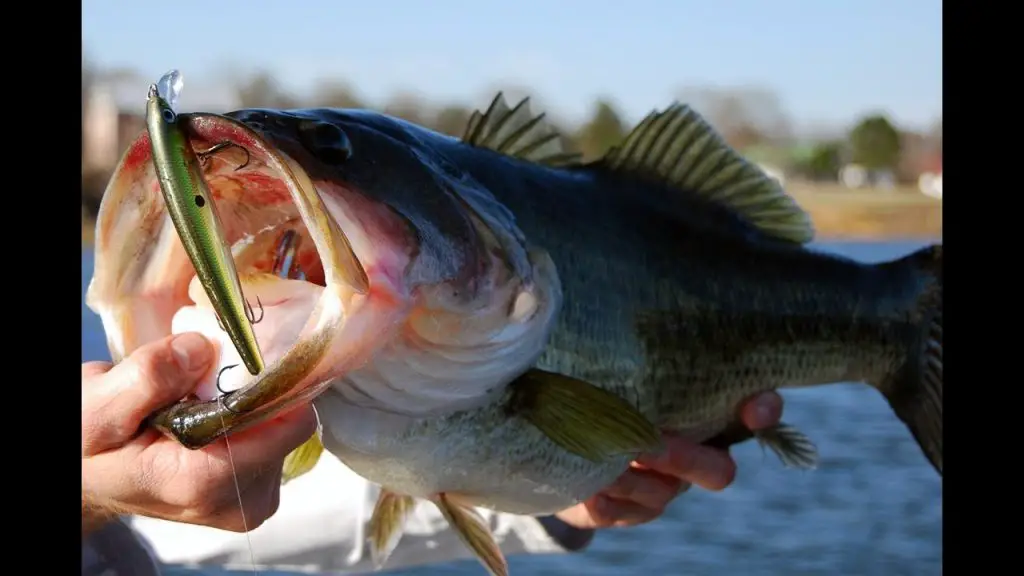
2. Smallmouth Bass
Just as their name entails, the smallmouth bass species look very similar to their largemouth cousins, but have a smaller mouth. One of the other major differences that smallmouth bass have is their darker-green coloring that features dark vertical stripes, giving it a distinct appearance. These fish are mostly found in the eastern and central portions of America and are known to thrive in the Great Lakes region.
The scientific name for smallmouth bass is Micropterus dolomieu, but they are commonly referred to as ‘smallies’ or ‘bronzebacks’ by anglers who fish for them. They have a reputation for being more aggressive and feisty than their larger counterparts, which makes them especially popular to catch on a rod and reel. They also live up to their ‘small’ reputation in size as the smallmouth bass only reach a weight of about 10 pounds in optimal conditions.
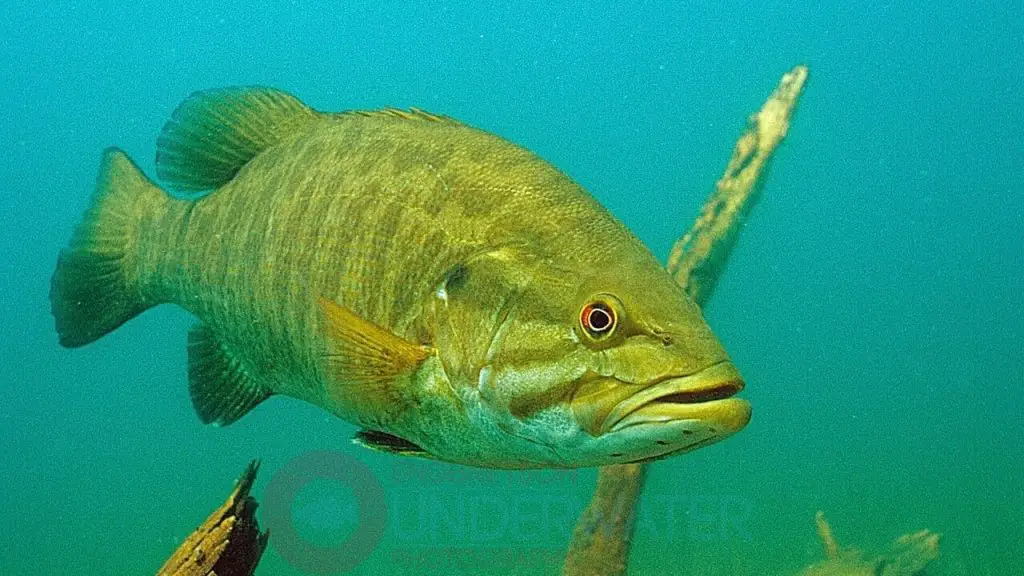
3. Spotted Bass
The spotted bass are sometimes mistaken as largemouth by beginner or novice anglers as they share many of the same basic characteristics and are found in relatively the same environments. There are a few different species of bass that commonly get mistaken for spotted bass due to the fact that they share quite a few traits in terms of their appearance and color pattern. Spotted bass are known as Micropterus punctulatus in the scientific community, but anglers usually refer to them as ‘spots.’
These fish don’t usually grow as large as largemouth bass as they are known to only live to about 6 years in the wild and typically reach 9 or 10 pounds in the best conditions. However, spotted bass are well-known as one of the most hard-fighting varieties in freshwater fishing. While largemouth bass tend to be loners, spotted bass are much more of a ‘schooling’ fish that will spend a majority of their time with a group of other spotted bass.
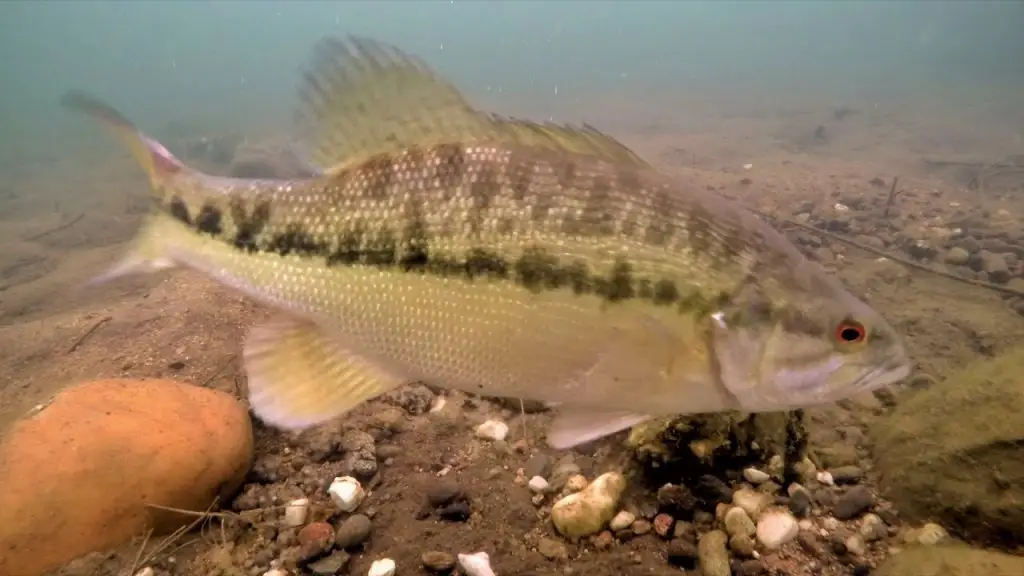
4. Florida Bass
According to most competitive anglers, the Florida bass species are the most prized types of bass in the world. These bass are virtually indistinguishable from their largemouth cousins and biologists have to use genetic analysis to determine whether or not a fish is florida or largemouth bass. They are known under the same scientific name as the largemouth bass, but Florida bass are known to grow at an astounding rate in the right conditions. They can sometimes pack on as many as two pounds per year.
These types of bass are usually the most sought-after kinds of bass when it comes to stocking fish in freshwater lakes. Many anglers know them more specifically as F1 bass and prefer them over any other species due to their ability to live longer and grow larger than any other kind of black bass. As their name indicates, these bass are native to Florida, but have been dispersed over the whole continent in recent decades.

5. Alabama Bass
Alabama bass are very similar to the spotted bass in many ways. The Alabama bass, or Micropetrus henshallii, are known to be native to southern Alabama and western Georgia. These fish were recognized as spotted bass until 2008 and have been found in states as far away as California or Kentucky in recent years due to stocking efforts.
Alabama bass have a distinct tooth patch in their mouth that features much longer, needle-like fangs that allow them to firmly grip their prey. They are considered an invasive species outside of Alabama and Georgia as they tend to take over bodies of water and sometimes lead to dwindling numbers of largemouth bass as they are smaller, faster and more aggressive.
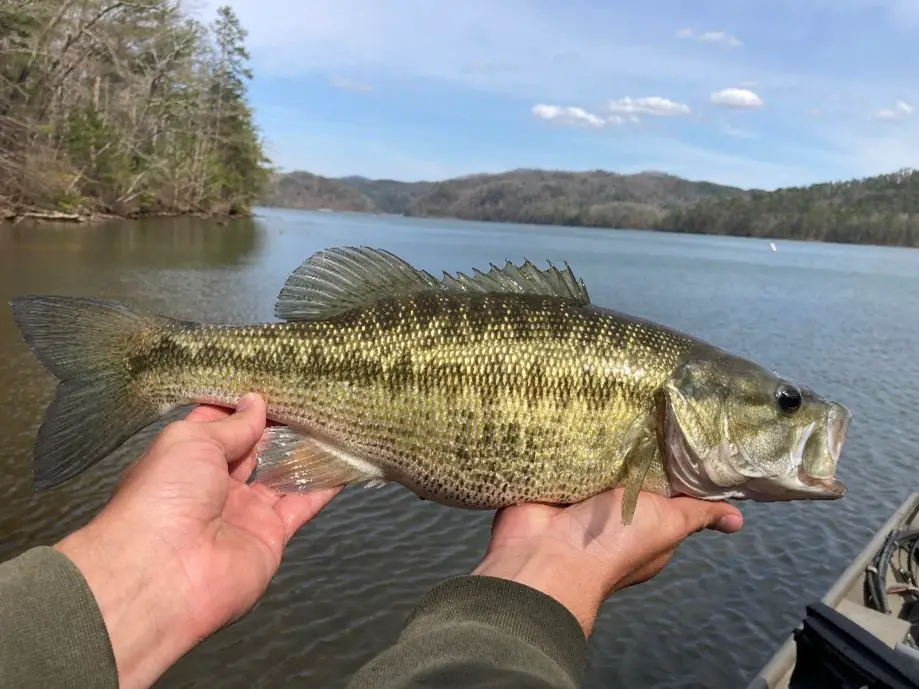
6. Redeye Bass
Redeye bass are, as you might have already guessed, distinguished by their bright red eyes. They are very similar to largemouth bass in almost every other way except that the redeye bass only grows to about 12 inches in the most optimal conditions. Their scientific name is Micropterus coosae, which is a nod to the fact that they are native to Georgia’s Coosa River and the small streams that branch off it.
They spend much of their time taking refuge under the calm waters around the edges of rivers and lakes where they congregate under trees, logs and other types of structure. These small fish fight as hard as any in the black bass species and anything weighing more than 1 pound is considered a trophy redeye bass.
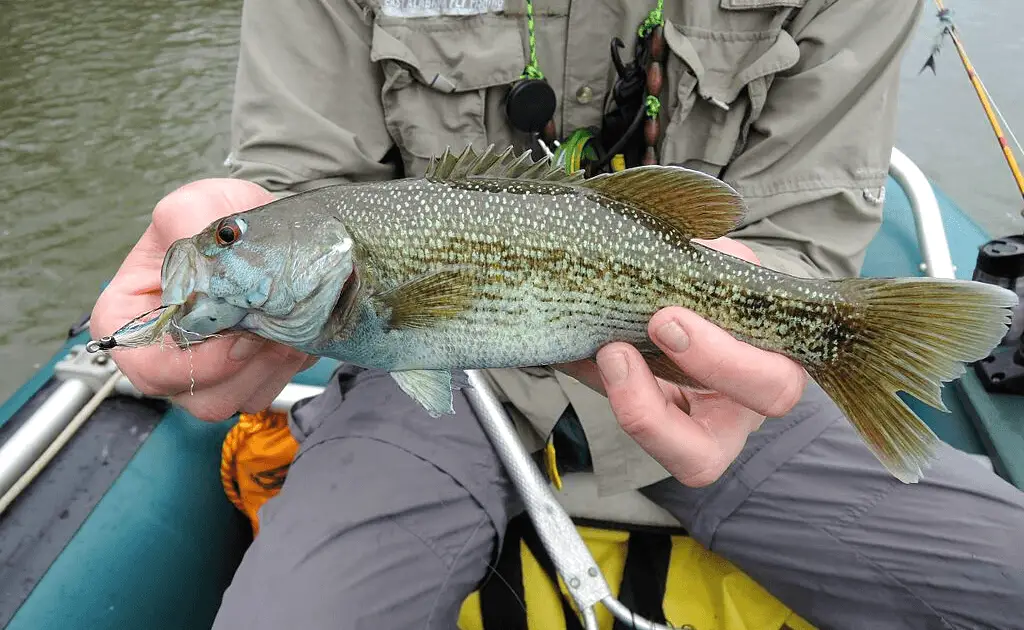
7. Shoal Bass
Another type of bass known to originate in Georgia is the shoal bass, or Micropterus Cataractae. These fish appear similar to the largemouth in some ways, but have more of an olive coloration instead of the vibrant green that’s found in most bass species. These fish were originally thought to be redeye bass, but were reclassified as their own particular species in 1999 after biologists studied them more thoroughly.
Shoal bass have red eyes and often grow roughly the same size as most spotted bass. The world record shoal bass weighs over 8 pounds. The shoal bass gets its name because they are typically found along the shoals of the Flint or Chattahoochee rivers in Georgia.

8. Guadalupe Bass
Native to the Lone Star State of Texas, the Guadalupe bass are another unique black bass species. The Guadalupe bass, or Micropterus treculii, have distinct spots along their body that extend down to their lower portions and sometimes have more of the olive coloration found in shoal bass. Guadalupe bass are capable of breeding with both spotted bass and smallmouth bass and the offspring produced are virtually indistinguishable from either species.
The Guadalupe bass is native to the Brazos, Guadalupe, Colorado and San Antonia rivers around Mexico and Texas, but these fish are actually endangered at the moment due to spotted bass taking over much of their native habitat.
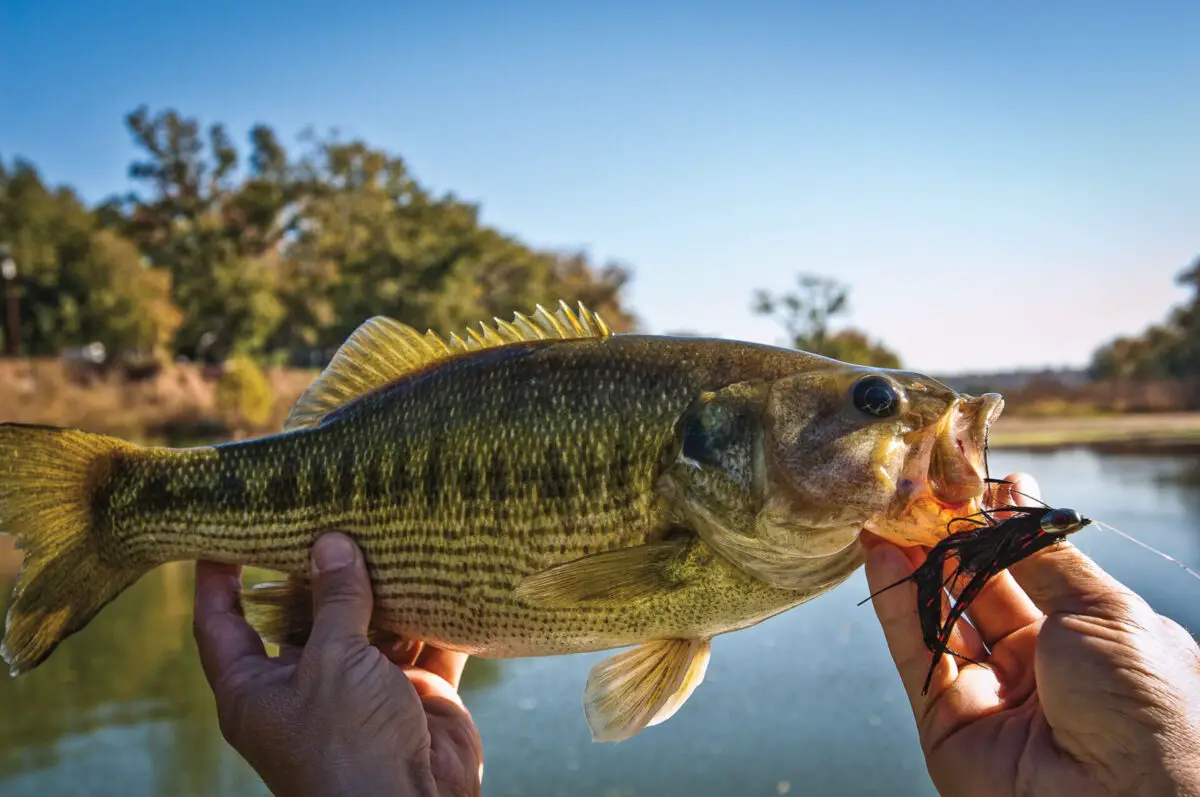
9. Suwanee Bass
The Suwannee bass might be the most unique out of all the different species of black bass. Known for its deep-turquoise color, the Suwannee bass is one that’s difficult to find, but is also on the list of must-catch fishes if you want to complete the Georgia Bass Slam. Suwannee bass, or Micropterus notius, lives in the Suwanee and other small rivers along the Georgia-Florida state line.
These are another black bass that tend to thrive in the rivers, but are one of the only species on our list that prefer the dark, black waters of the south Georgia swamplands. They are sometimes called ‘Wannee bass’ and a trophy-sized Suwannee bass is usually considered to be one that’s more than 12 inches long.

10. Chattahoochee River Bass
The Chattahoochee is one of the southeastern United States’ most prominent rivers as it stretches from the mountains just north of Atlanta and empties into the Gulf of Mexico. All along this river’s 430 miles, anglers can find various black bass species—including the elusive Chattahoochee bass. This fish is another bass that closely resembles the redeye bass in many ways, but has a few distinguishing features of its own.
The Chattahoochee bass is one that features vibrant red coloration on the outside edges of its fins while its body and scales very closely resemble that of a largemouth bass. These fish don’t usually reach sizes of more than 12 inches in length or 1 pound in weight.

11. Tallapoosa Bass
The Tallapoosa bass is another one of the smaller varieties when it comes to the black bass species. The Tallapoosa bass, or Micropterus tallapoosae, features a darker overall coloration and stripe patterns that resemble a smallmouth bass instead of a largemouth. Their bellies sometimes have the blueish tint that’s similar to that of a bluegill.
As their name entails, the Tallapoosa bass is native to the Tallapoosa river system, which runs through west Georgia and east Alabama into multiple large reservoirs along its way into the Gulf of Mexico. A trophy-sized Tallapoosa bass is usually larger than 12 inches in length.
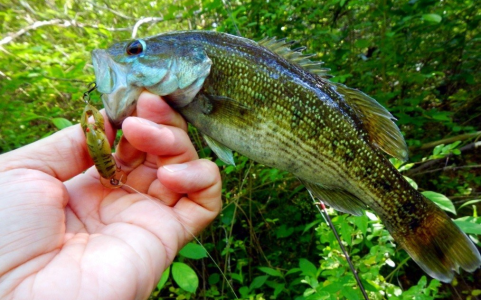
12. Choctaw Bass
Choctaw bass were originally thought to be spotted or Alabama bass species, but were reclassified in 2013 after biologists could distinguish them from other types of bass using genetic testing methods. The Choctaw bass, or Micropterus sp. cf. punctulatus, is another of the smaller black bass species found in the Deep South around the southern portion of Alabama and Mississippi as into the Florida panhandle.
They can be found in the calm waters along the edges of rivers and generally grow about 12 inches long in the right conditions. Distinguishing a Choctaw Bass from a spotted or Alabama bass is nearly impossible to do using visual characteristics, but genetic testing reveals that they can interbreed with both spotted bass and Alabama bass.
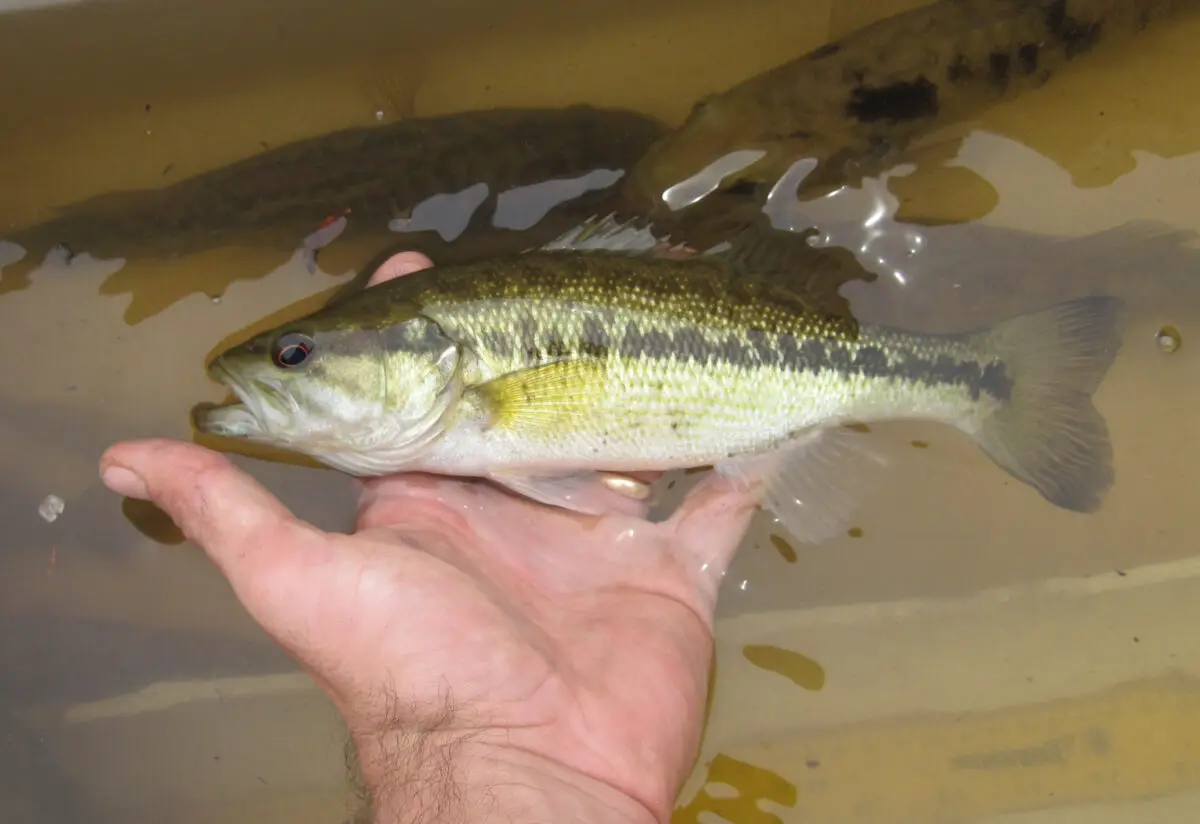
13. Warrior Bass
Warrior bass are one of the lesser-known species of black bass that exist in central or southern Alabama. Warrior bass, or Micropterus warriorensis, get their name because they are mostly found along the Black Warrior River system in central Alabama.
This is one fish that there still seems to be a bit of controversy about as to whether or not they are actually an individual species, or part of the redeye bass species. Since redeye bass are not typically found along the Black Warrior River system, you can bet that it’s probably a Warrior bass if you catch a fish resembling one.
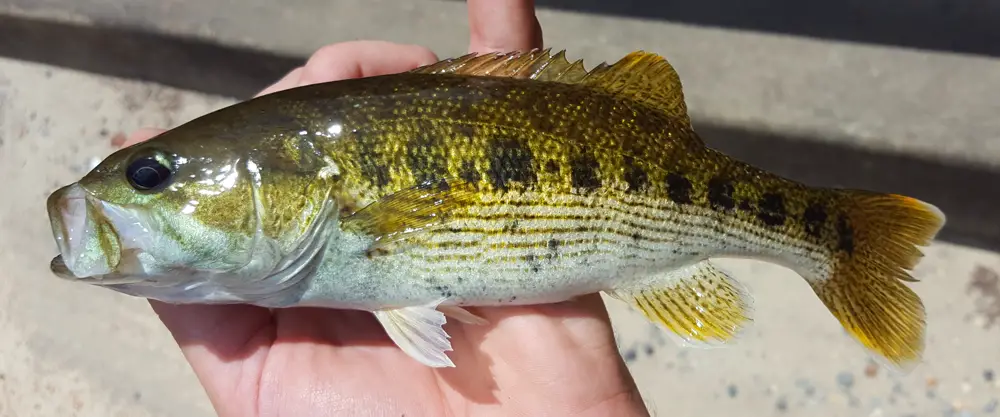
14. Cahaba Bass
The Cahaba bass are another smaller variety of black bass species that live in central Alabama. Known scientifically as Micropterus cahabae, they closely resemble smallmouth bass with their dark-green coloration and vertical stripes. However, their red eyes usually allow anglers to tell them apart from smallmouth.
In addition to their physical appearance, the Cahaba bass can be found in an area that’s a bit too far south for smallmouth to live comfortably. This bass species gets its name because it’s mostly found in the Cahaba River system.
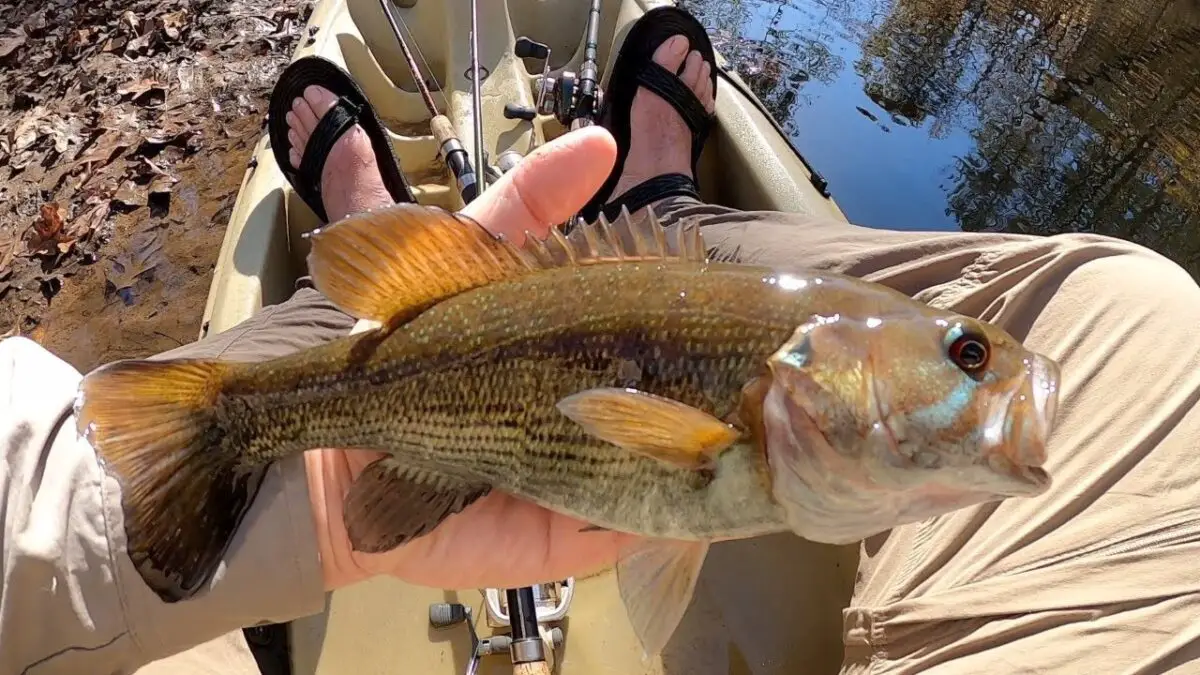
15. Altamaha Bass
In many ways, the Altamaha bass share quite a few traits with their distant cousins, the Guadalupe bass. They often have a darker or olive color and don’t usually grow more than about 16 inches in the best of conditions. The Altamaha bass, or Micropterus sp. cf. cataractae, gets its name from the main river where it’s found, northern Georgia’s Altamaha River system.
This is another black bass that features the highly-unique red eyes and splotchy-green scale pattern that made many anglers believe it was merely a redeye bass species for many years. This is one of the more elusive kinds of bass in the southeast and there is no official state or world record for the Altamaha bass.

Conclusion
The black bass species is one of the more interesting types of freshwater fish worldwide. Many fish are found in Georgia or Alabama, so most bass fishing anglers have these two states on their must-visit bucket list. Using the details we’ve included in this article, you should be able to pinpoint some of these fish and identify them if you reel one in on a future fishing trip.
